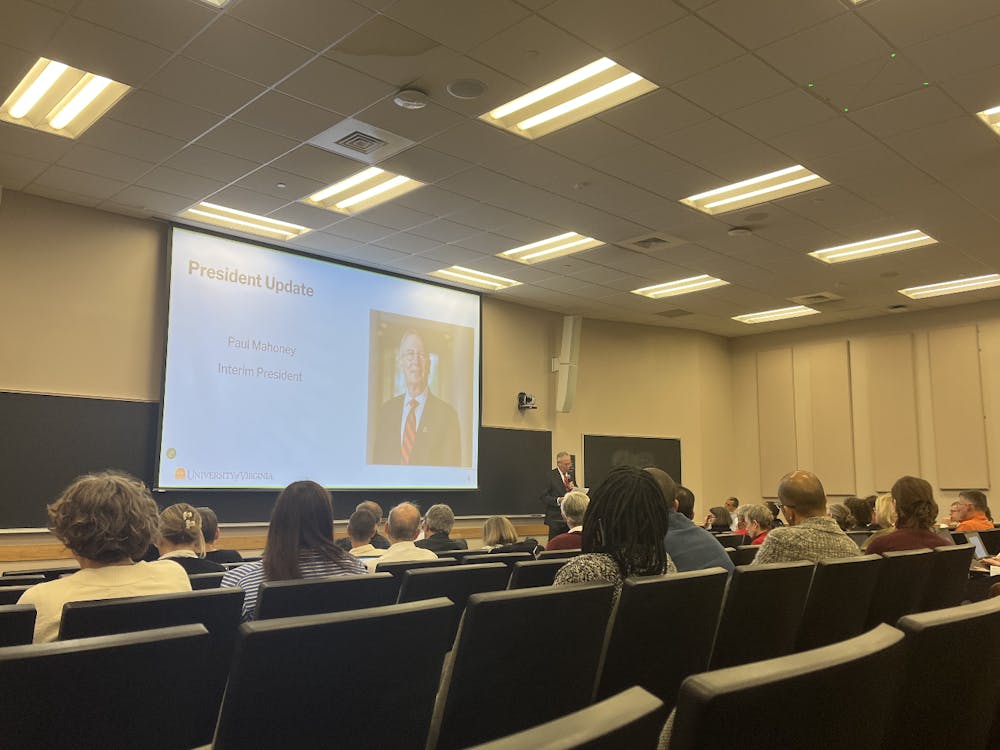In the University’s Oct. 22 agreement with the Justice Department, Section 2, Clause 7 states that the University agrees to apply the Department’s guidance regarding civil rights law released July 29 and provided that recommended policies remain consistent with relevant judicial decisions. The guidance outlined how initiatives such as diversity, equity and inclusion programs, the use of race or other protected characteristics for employment or program participation and the use of proxies for protected characteristics might violate federal antidiscrimination law.
“Not only is discrimination based on protected characteristics illegal under federal law, but it is also dangerous, demeaning, and immoral,” the guidance reads. “Yet in recent years, the federal government has turned a blind eye toward, or even encouraged, various discriminatory practices, seemingly because of their purportedly benign labels, objectives, or intentions. No longer.”
The Oct. 22 agreement suspended five Justice Department investigations into the University in exchange for the University’s compliance with the Department’s interpretation of civil rights law. The “Guidance for Recipients of Federal Funding Regarding Unlawful Discrimination” was shared July 29 by Attorney General Pam Bondi for all institutions which receive federal funding, including educational institutions, state and local governments and public and private employers.
“Entities that receive federal financial assistance or that are otherwise subject to federal antidiscrimination laws … should review this guidance carefully to ensure all programs comply with their legal obligations,” the guidance reads.
The guidance outlines the key federal antidiscrimination laws which it is based on, as well as examples of unlawful and potentially unlawful practices. It also includes a list of recommendations for best practices which focus on inclusive access, basing selection decisions on measurable skills and qualifications and ongoing monitoring for compliance.
The legal basis for the guidance stems from Title VI and Title VII of the Civil Rights Act of 1964, which prohibit discrimination based on race, color or national origin in programs receiving federal funding and employment discrimination based on race, color, religion, sex or national origin. The guidance also cites Title IX of the Education Amendments of 1972, which prohibits discrimination based on sex in educational programs receiving federal funds and addresses sexual harassment.
Under the guidance, granting preferential treatment to individuals or groups based on protected characteristics in a way that disadvantages other qualified individuals constitutes a violation of civil rights law. This includes race-based scholarships or programs, preferential hiring, promotion or admission for “underrepresented” groups and access to facilities or resources based on race or ethnicity.
The guidance also notes that “proxies” for protected characteristics, such as race or sex, could be considered unlawful. These proxies include “cultural competence” or “lived experience” requirements, recruitment targeted at specific geographic areas or institutions and “overcoming obstacles” narratives or diversity statements.
“While these criteria may appear facially neutral, they become legally problematic under any of the following circumstances: They are selected because they correlate with, replicate, or are used as substitutes for protected characteristics, [or] they are implemented with the intent to advantage or disadvantage individuals based on protected characteristics,” the guidance reads.
One topic within the guidance brings up segregation — the guidance says that restricting access to programs, activities or resources based on protected characteristics is unlawful. This section also says that while segregation is generally unlawful, not maintaining sex-separated athletic competitions and intimate spaces can also violate civil rights laws.
“A college receiving federal funds designates a ‘BIPOC-only study lounge,’ facially discouraging access by students of other races. Even if access is technically open to all, the identity-based focus creates a perception of segregation and may foster a hostile environment,” the guidance notes as an unlawful example. “This does not apply to facilities that are single-sex based on biological sex to protect privacy or safety, such as restrooms, showers, locker rooms, or lodging.”
The University’s agreement with the Justice Department specifies that the University agrees to follow the guidance, only as long as that guidance is consistent with relevant judicial decisions. However, Brie Gertler, interim executive vice president and provost, commented on one existing conflict between the guidance and two decisions of the Fourth Circuit Court of Appeals — the July 29 guidance adopts an understanding of Title IX that is opposite from the Justice Department’s view.
This conflict focuses on the terms outlined in the guidance which ask recipients of federal funding to define sex strictly as biological sex and to require access to intimate spaces and athletic competitions to be based on biological sex.
During an Oct. 24 Faculty Senate meeting, Gertler noted that those terms do not apply to the University in light of current decisions in the Fourth Circuit Court. Whether the terms do apply to the University in the future will depend on court decisions — one of the cases, B.P.J. v. West Virginia Board of Education, is currently on review in the United States Supreme Court.
Gertler explained that the current decisions from the Fourth Circuit Court require that individuals be allowed access to intimate spaces consistent with their gender identity.
“The bottom line is that all of what I just said about gender that’s in the DOJ guidance does not apply to us, and it’s explicit in the agreement that it does not apply to us. And in fact, legally, we are bound by the Fourth Circuit and not by what’s in that DOJ document. So you can put the gender stuff aside,” Gertler said.
University leadership has not publicly commented on how it will reconcile potential future conflicts between the guidance and evolving judicial interpretations of civil rights law.
Section 2, Clause 8 of the Oct. 22 agreement also recognizes that the University had already taken steps to comply with federal civil rights laws prior to signing the agreement. The clause states that the federal government will consider the University fully eligible to receive federal grants, funding, contracts and awards on equal terms with other universities, without disadvantage or special restriction.
Under the terms of the agreement, the University must submit quarterly reports detailing its ongoing efforts to comply with civil rights law. Should federal officials determine that the University is not demonstrating sufficient progress toward compliance with the agreement or relevant civil rights laws, the Justice Department will issue a formal notice.
The University will then have 15 days to address the deficiencies and show meaningful improvement. If it fails to do so, the federal government may end the agreement and according to Interim University President Paul Mahoney, the University will be in the same position it was before the deal was signed.
The agreement will remain in effect until Dec. 31, 2028, provided that the University complies with its terms.







